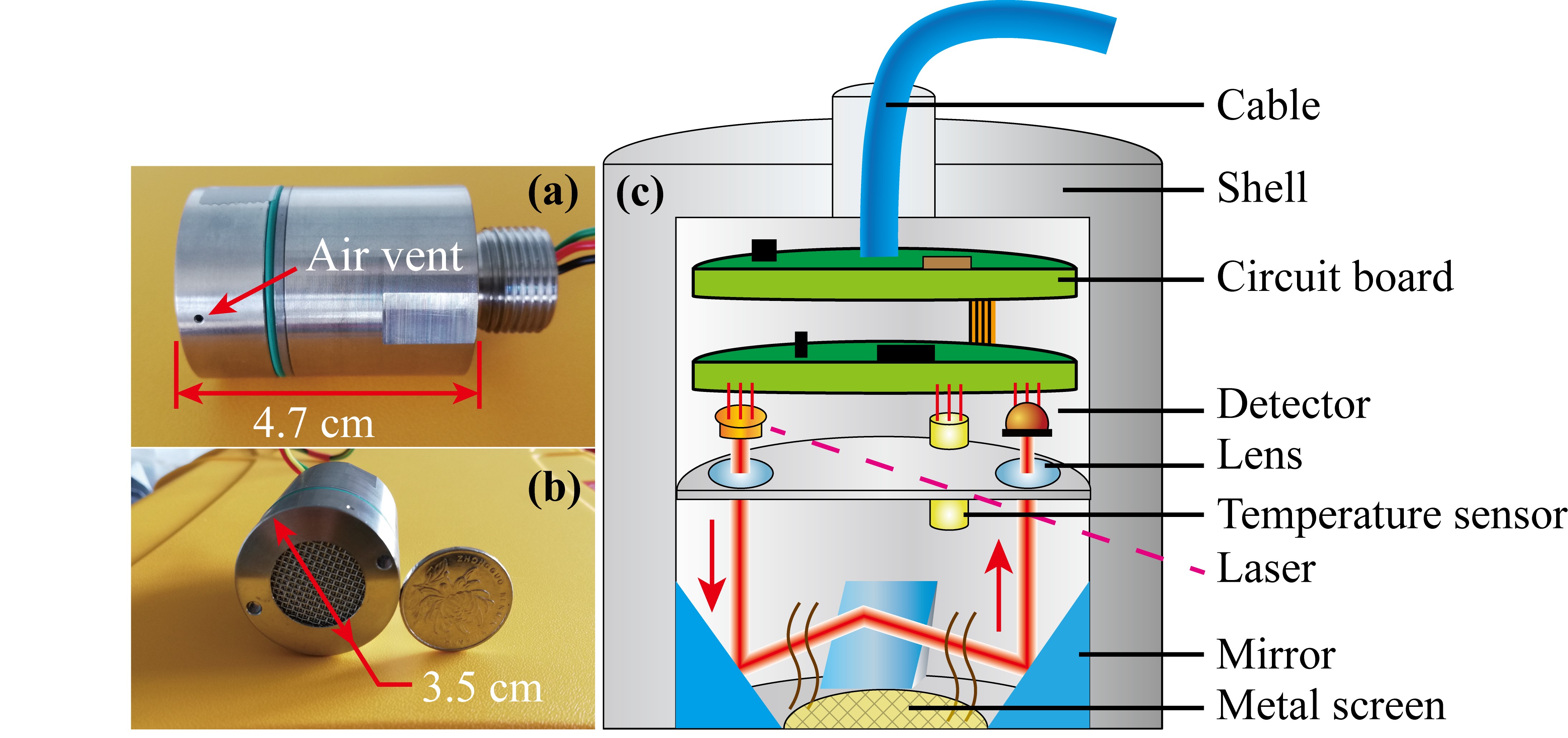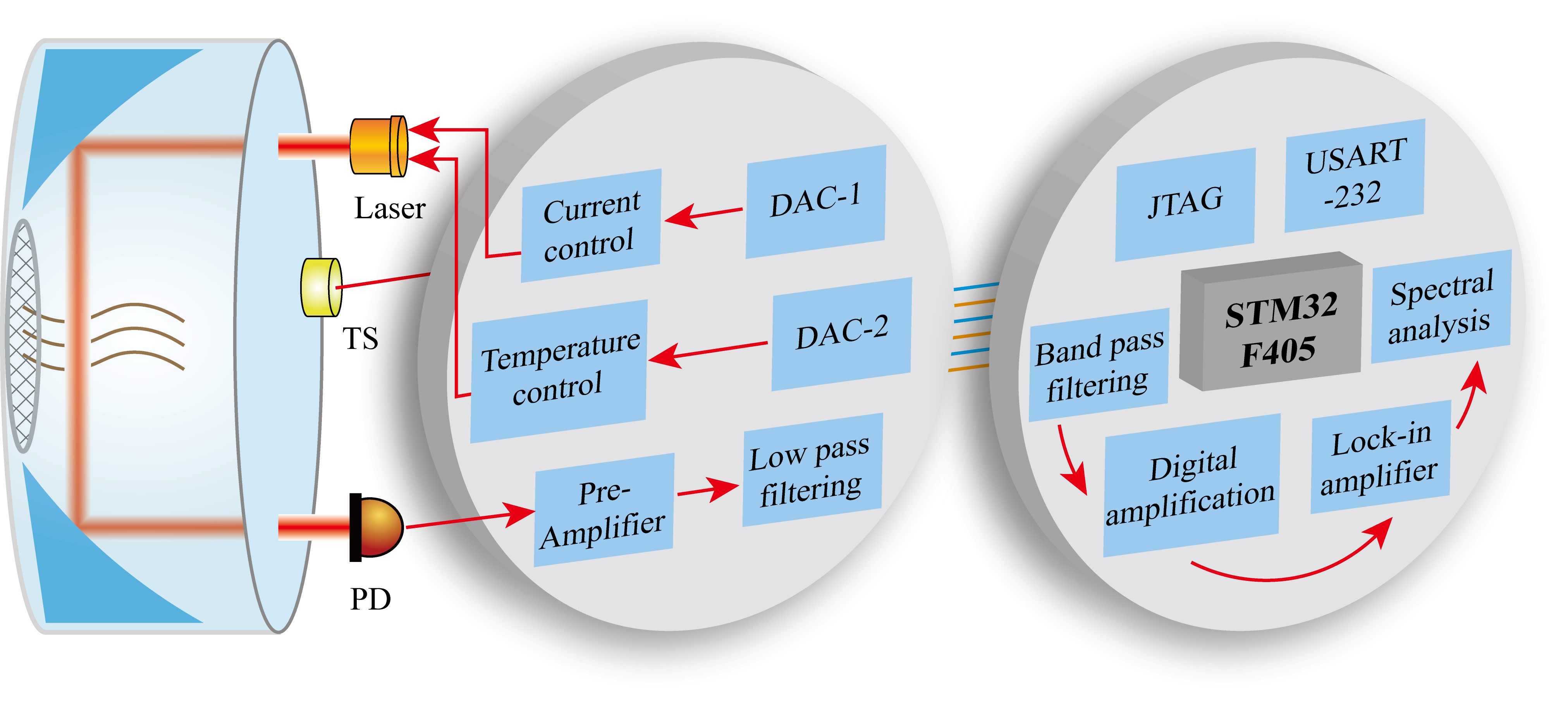
Methane (CH4), a kind of primary constituent of natural gas, is colorless and odorless. It can form explosive mixtures in coal mines and ambient air. That’s why scientists tried many ways to monitor whether the CH4 concentration reaches the lower explosive limit.
A research group from Anhui Institute of Optics and Fine Mechanics (AIOFM), Hefei Institutes of Physical Science (HFIPS) took advantage of near-infrared spectroscopy and proposed a novel compact full range CH4 probe sensor using “trans-world” processing method, which marked the realization of full range detection.
"Common optical detection schemes cannot adapt to the dangerous site applications, and it will appear nonlinear at high concentrations," said ZHANG Zhirong, who led the team. “This time we improved the detectable range and the detectable column density.”
In this research, they encapsulated the circuit system and absorption cavity (optical path length 10 cm) together in a stainless-steel metal shell (4.7×3.5 cm). The gas concentration is directly output by the serial port, which is convenient for the layout and control of monitoring points in different applications. The team also tested the performance of this microprobe in detail and verified the reliability and environmental adaptability of the probe system.
This newly developed detection scheme combines the benefits of calibration-free DAS and the high-sensitivity WMS for absolute concentration measurement according to the variation point, thereby ensuring the possibility of high accuracy of full-range detection.
"This probe sensor is highly integrated, full-range, compact, and low-cost,” said ZHANG Zhirong, “It’s is very suitable for leaking detection in nature gas industries and coal mines.”
Link to the paper: A novel compact intrinsic safety full range Methane microprobe sensor using “trans-world” processing method based on near-infrared spectroscopy

Fig.2. Photograph of the CH4 probe sensor. (a) Length of probe; (b) Diameter of probe; (c) Section and structure of the probe. (Image by ZHANG Lewen)

Fig.3. Schematic of the CH4 probe sensor system. TS: temperature sensor; PD: photodetector; DAC: digital to analog converter; JTAG: joint test action group; USART: universal synchronous/asynchronous receiver/transmitter. (Image by ZHANG Lewen)
Contact:
ZHAO Weiwei
Hefei Institutes of Physical Science (http://english.hf.cas.cn/)
Email: annyzhao@ipp.ac.cn